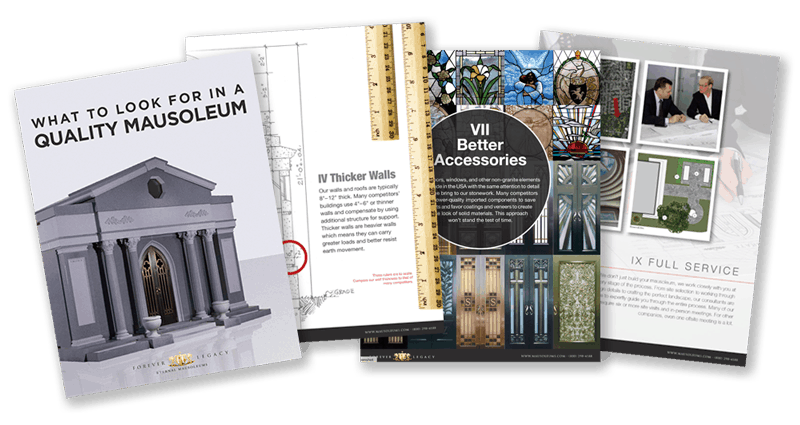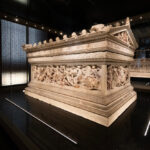Palmer Monument
Open Air
Architects McKim, Mead, and White, designed this temple to shade the twin sarcophagi of Potter Palmer (1826-1902), and his wife Bertha. Sixteen massive ionic columns ring the structure and a line of antifixes stand at attention along the roofline. Both sarcophagi are embellished with flowery garlands and down-turned torches, symbolizing life extinguished.
If all of this seems a bit excessive, remember, it was part of the job for wealthy late nineteenth century Americans to display their wealth in a big way. Potter Palmer’s fortune began with a store he opened on Lake Street in central Chicago. He instituted the practice of the “money back guarantee”. He even allowed people to take an item home on approval, try it out, and bring it back if they weren’t happy.
Eventually, he sold his store to Marshall Field and ventured into real estate. He bought Chicago’s State Street, widened it and lined it with new buildings. The gem of his State Street collection of buildings was the Palmer House, a luxurious hotel, which he presented to his young bride, Bertha Honore, as a wedding present.
Much of State Street, including the Palmer House, was destroyed in the Great Chicago Fire of 1871. Undaunted, Palmer borrowed money and rebuilt the street complete with a new and even more impressive Palmer House Hotel. He built a castle for Bertha on Lake Shore Avenue, where she held court as Queen of Chicago society and collected French Impressionist paintings, which she later donated to the Chicago Art Institute.
Text and photo © Douglas Keister Visit Doug’s Author Page
[address cemetery=”Graceland Cemetery” street=”4001 North Clark Street” city=”Chicago” state=”Illinois” zip=”60613″]

